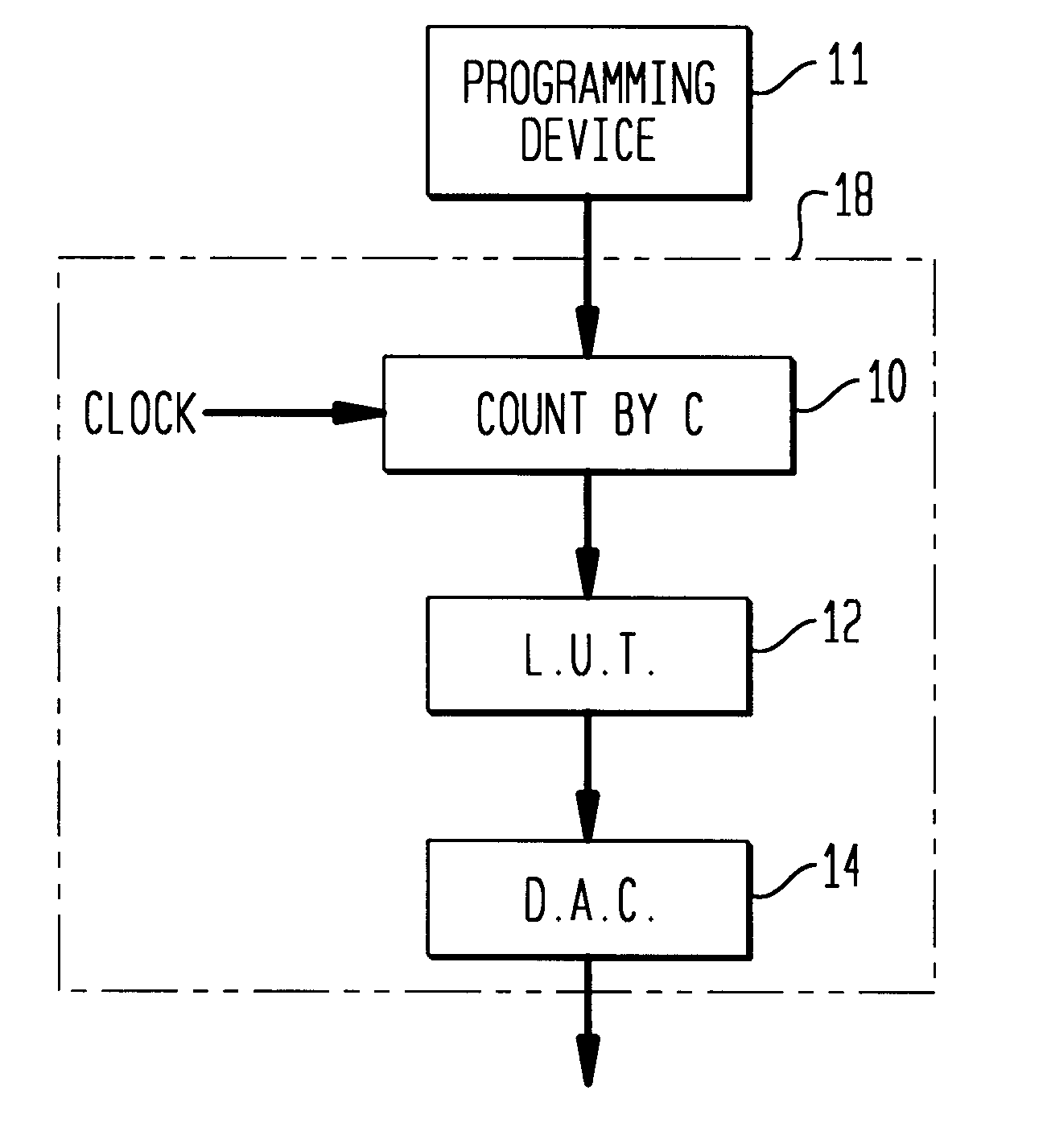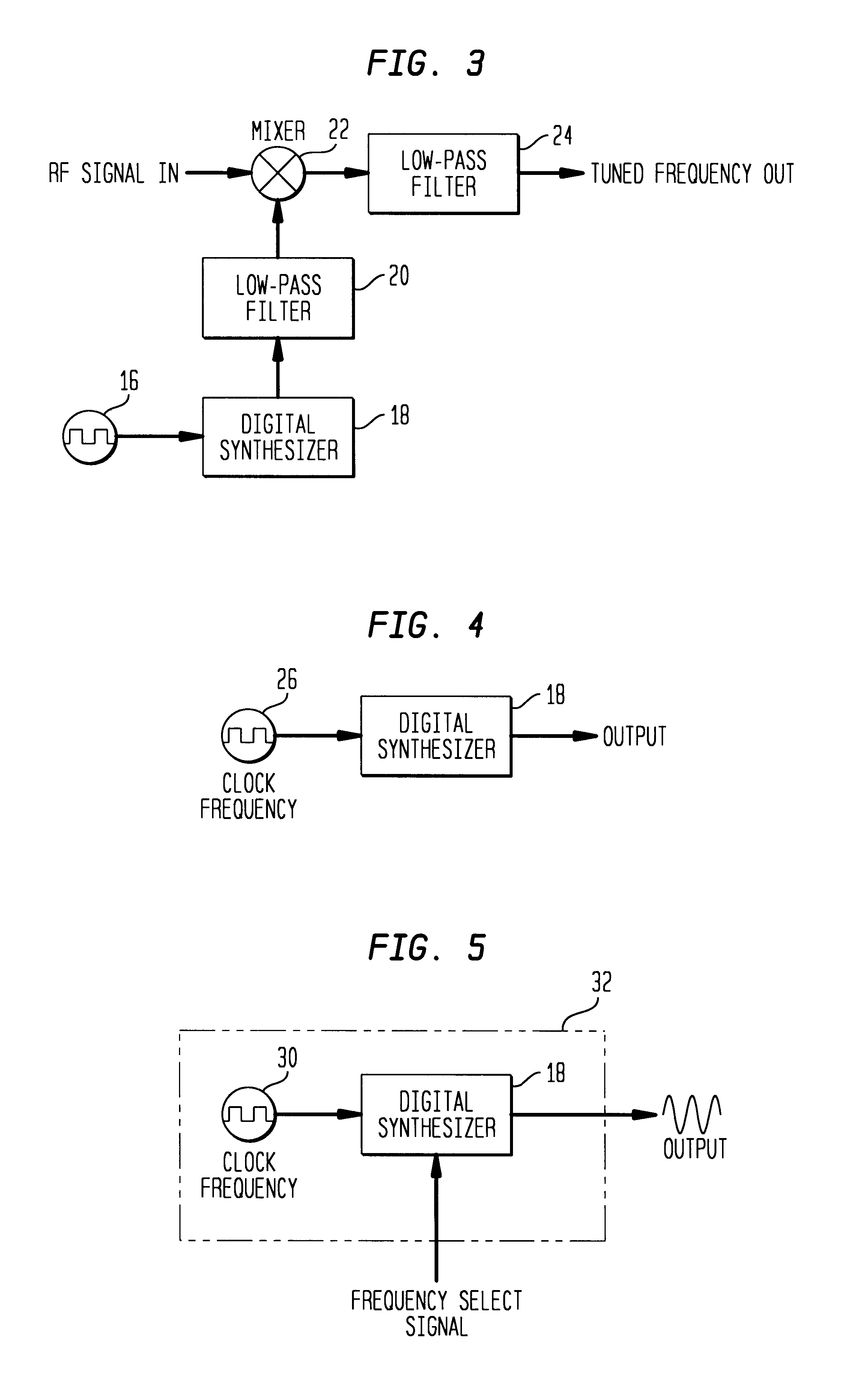Direct digital synthesizer
a digital synthesizer and digital synthesizer technology, applied in the direction of automatic control, instruments, computing, etc., can solve the problems of increasing cost, slow and complex circuit, and increasing complexity of circui
- Summary
- Abstract
- Description
- Claims
- Application Information
AI Technical Summary
Benefits of technology
Problems solved by technology
Method used
Image
Examples
Embodiment Construction
The present invention is directed to a digital synthesizer 18 of FIG. 2, and preferably a direct digital synthesizer which can operate at a very high frequency. As shown in FIG. 2, the digital synthesizer 18 includes a counter 10, which, upon receiving a clock input, counts by a predetermined fixed increment "C" (wherein "C" is an integer); a memory 12, such as a programmable read only memory (PROM), which stores and outputs digital waveform values upon receiving an input from the counter 10; and a digital-to-analog converter 14 which converts the digital waveform values output from the memory 12 into an analog waveform.
Preferably, the counter 10 is a non-volatile reconfigurable complex programmable logic device (CPLD) IC. A programming device 11, external to the direct digital synthesizer 18 and capable of incrementing by the predetermined fixed increment "C", preferably loads the circuit configuration of the counter 10 of the digital synthesizer 18. Such a counter 10 operates at a...
PUM
 Login to View More
Login to View More Abstract
Description
Claims
Application Information
 Login to View More
Login to View More - R&D
- Intellectual Property
- Life Sciences
- Materials
- Tech Scout
- Unparalleled Data Quality
- Higher Quality Content
- 60% Fewer Hallucinations
Browse by: Latest US Patents, China's latest patents, Technical Efficacy Thesaurus, Application Domain, Technology Topic, Popular Technical Reports.
© 2025 PatSnap. All rights reserved.Legal|Privacy policy|Modern Slavery Act Transparency Statement|Sitemap|About US| Contact US: help@patsnap.com



